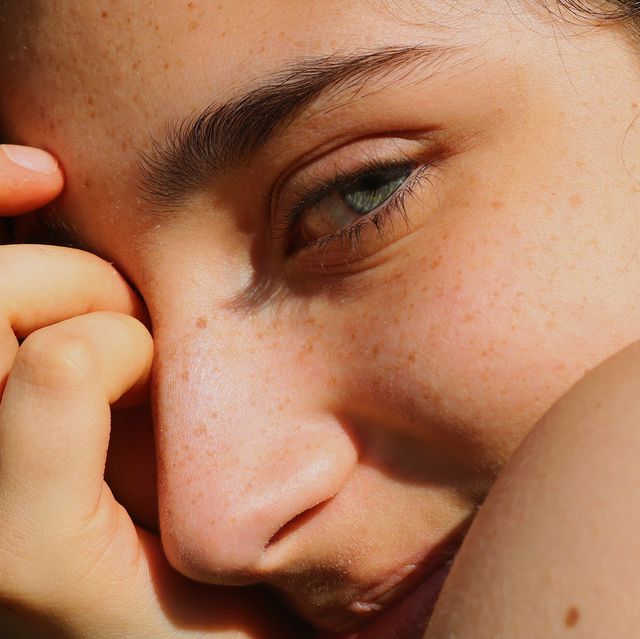“Am I just doing what is popular on social media, or am I actually choosing beauty looks that make me feel good? Am I just looking at what the Kardashians are doing to their eyebrows and laminating them in the same way?”
-Cassandra Bankson, USA Today, 2024
Remember razor-thin eyebrows from the 90s, or even the iconic “thick eyebrow” look from 2016? What’s the standard now, and are these quickly everchanging standards causing us to have “eyebrow blindness?”
What is eyebrow blindness?
Eyebrow blindness is a term coined by the beauty community on TikTok, and it describes how we’re constantly chasing eyebrow trends rather than pursuing what accentuates our unique features.
Cassandra describes eyebrow blindness as “prioritizing trends over long-term health and beauty,” or losing sight of what works best in pursuit of what’s popular.
However, eyebrow blindness is nothing to be ashamed of. In fact, several TikTok content creators have gone viral for sharing their past experiences with it. So much so that it’s started a trend. The trend starts with the creator making a reminiscent and incredulous face as though they’re recalling something embarrassing. Then, in the background, an acapella song sardonically sings, “I remember when I lost my mind…”
@user826541398 i dont want comments about my eyebrows now, if you dont like them just keep scrolling 💓 #greenscreen #eyebrowblindnesss #2022 #trauma ♬ Gnarls Barkley Crazy Stephen Kramer Glickman - Gustavo Rocque
But, did we truly lose our minds, or was eyebrow blindness the logical response? Cassandra has also experienced eyebrow blindness, and given that we are social beings, choices influenced by trends are actually very rational.
The problem is that trends can cause short-sightedness. Trends make our unique features very apparent to us because we’re comparing them against a standard.
Trends can cause us to scrutinize and criticize our own features when we feel like they don’t “measure up” to a perceived standard. As a result, we all end up trying our hardest to look like one image.
For instance, Cassandra remembers going through this. Wanting to match the standard, she tried a variety of eyebrow looks. But, looking back, she can’t imagine trying them again.


How do I find what works for me?
Cassandra recommends chatting with an esthetician, cosmetologist, or expert before choosing a look. And now, we even have an increased accessibility to photo imaging tools. These can help us “test” a look before committing to one.
Because shortsightedness can have long-term effects, mindfulness is a great tool for choosing the right beauty treatment.
Using mindfulness to find the right beauty treatment
Sometimes impulsive decisions lead us to more intense and semi-permanent treatments such as PDO thread lifts or lip fillers. PDO threads require a thread to be inserted into the face. A PDO thread lift is a popular, non-surgical facelift where facial skin is lifted and tightened using polydioxanone (PDO) threads.
These threads are anchored and inserted into different layers of the skin using needles, instantly lifting and tightening sagging skin (Academic Alliance in Dermatology, 2020). However, PDO thread lifts can lead to skin rippling and thread breakage. These issues can lead to an uneven appearance and sagging skin over time.
Furthermore, we all know about the beauty standard surrounding full lips, and because of it, people opt-in for lip fillers. There is nothing wrong with getting lip fillers, but doing it impulsively to meet a standard could have undesirable effects. Overdoing lip fillers can result in "duck lips," This is where the filler extends beyond the natural lip line, creating a pillowy or puffy look.
However, these situations are very preventable when we take the time to consider why we’re getting a certain treatment and how it can best accentuate our natural beauty. Accepting that you are an individual who inhabits her own beauty can lead to a more mindful approach. Cassandra says, “We don’t have to become a cookie-cutter image of beauty. We can define beauty on our own.”


